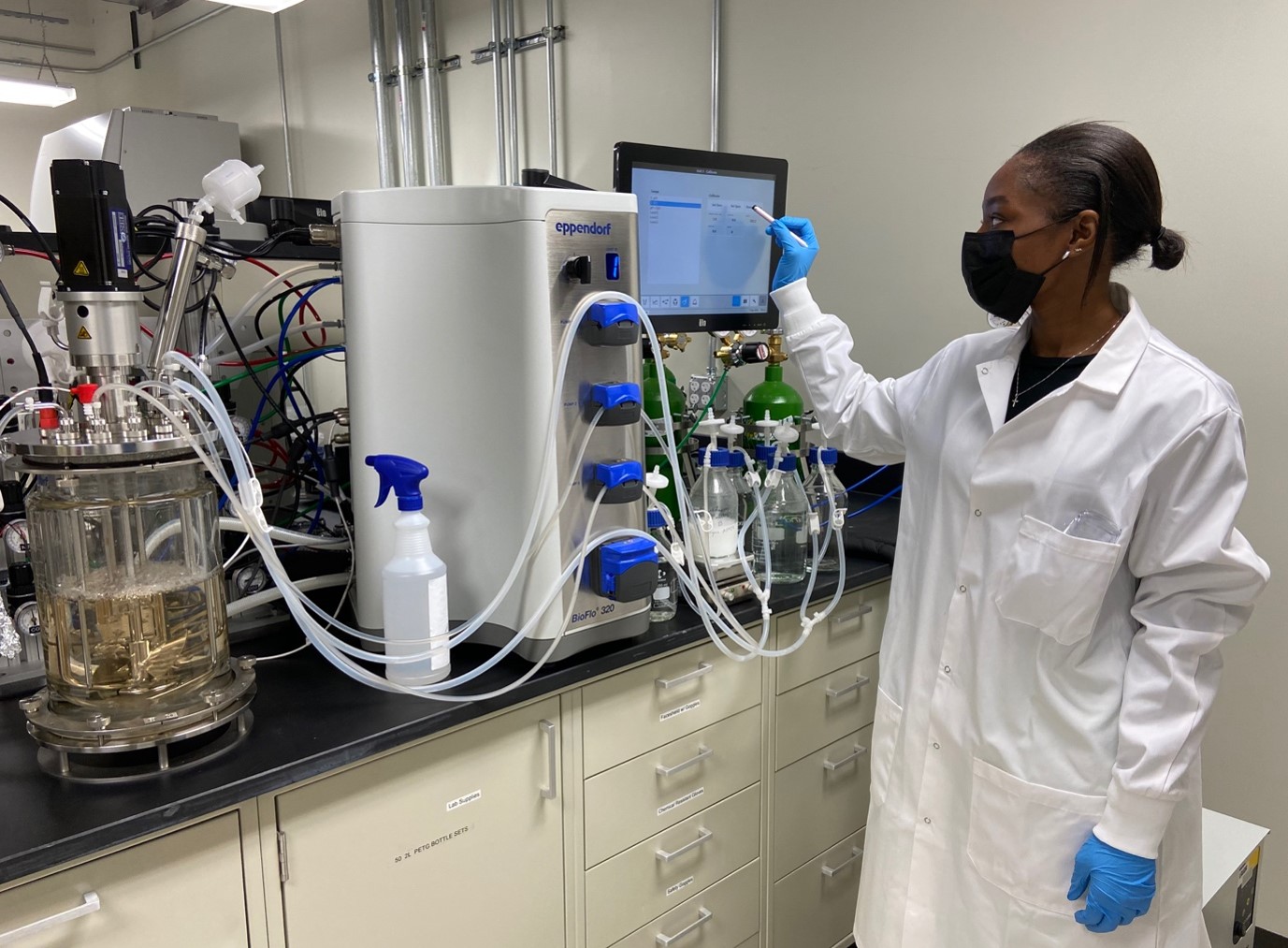From Pharma To Biopharma — Education & Workforce Training Programs Converge To Meet Industry Needs
By Kamal A. Rashid, Ph.D.

In 1982, when the FDA approved the first recombinant drug (insulin), there was a clear line between pharmaceutical companies and, as they were called at the time, biotechnology companies. That line has faded into history, with the convergence of the biopharmaceutical industry. This rapidly evolving industry is poised for a new era of growth; however, workforce development remains a significant limitation, particularly for manufacturing biologics.
The severity of the workforce challenge has played out in the headlines for months, as companies tried to ramp up production of vaccines and therapeutics to combat COVID-19. Perhaps the most public batch failure in biologics history, the scrapping of 15 million doses of the Johnson & Johnson COVID-19 vaccine reportedly because of human error at the Emergent BioSolutions manufacturing plant in Maryland, is a painful illustration of the need for larger scale and more effective training programs across the biomanufacturing spectrum.
To address that need, it’s time for education and workforce training programs to converge like the industry. Several years before SARS-CoV-2 emerged to ignite a pandemic, Albany College of Pharmacy and Health Sciences (ACPHS) in New York began planning its own convergence of pharmacy and biopharmaceutical academic programs. The vision was to leverage the classic pharmacy curriculum, which is focused on the biology of human disease and pharmaceutical sciences, with new hands-on laboratory experiences making biologics, from cell bank to purification.
As you know, manufacturing biologics is a far more complicated process than synthesizing small molecule drugs. Numerous studies in recent years have identified the difficulty of recruiting and retaining people to work in biomanufacturing as a major constraint on companies.
Biopharma Education Programs: How It All Began
Through the 1980s and into the 1990s, the fledgling biotechnology industry was relatively small, compared to Big Pharma. The technology set used at the time was limited, and biotech companies shouldered the full burden of training their employees. At Penn State University in 1989, my colleagues and I launched a biotechnology and bioprocessing training program, one of the very first at a university, with hands-on, short but intensive courses. At the time, it was becoming clear that the science and technology were advancing rapidly, and in order for the biotech industry to scale, a better pipeline for workforce development was needed. The program significantly helped the bio-based industry in the 1990s, which was using the less sophisticated bioreactors of that era.
Through the 1990s and into the 2000s, several community colleges started developing introductory programs for entry-level operations positions in biomanufacturing. The federal government supported these programs with millions of dollars in funding because of the potential longer-term growth opportunities of the industry. Several universities established bioprocess engineering degree programs and a handful of bioprocess centers. They offered some short-course training programs, and that educational infrastructure helped the biotechnology industry grow.
Even today, however, most undergraduate life sciences programs have little or no exposure to the science and methods used to design, validate, scale up, and produce biologics.
How The Industry Workforce Training Model Isn’t Enough
The reality remains that most biomanufacturing companies rely heavily on internal training programs to bring new hires up to speed on the basics. This can take months and significant resources; however, it’s unavoidable because the risk of human error leading to deviations, contamination, or batch failure is significant. Internal training programs are also responsible for meeting FDA requirements for maintaining the competencies of existing employees. Furthermore, the rapid advance of new technologies requires retraining established employees on new systems, instrumentation, and techniques.
Even before the pandemic, the industry needed more qualified workers. Monoclonal antibodies, like Humira, Opdivo, and others, now dominate sales for the industry and are routinely among the top 10 selling therapies in the United States. They will continue to grow, even as more advanced antibodies, bi-specific antibodies, antibody fragments, antibody drug conjugate (ADC) immunotherapies, and other biological entities advance through varying stages of development. This pre-pandemic pipeline was already robust and will need to be supported with workforce programs for established biomanufacturing processes.
This means the workforce challenge will become even more severe in the years ahead because the crucible of COVID-19 has refined medical technologies that are capable of treating not only infectious diseases but many other conditions previously considered untreatable, from rare genetic disorders to more prevalent diseases, including heart disease, cancer, diabetes, and several neurodegenerative diseases. There will be great demand for these new therapies, further straining the biopharmaceutical industry’s capacity.
How ACPHS Is Addressing The Need For More Biopharma Professionals
ACPHS in New York is addressing this workforce development gap with the opening of The Stack Family Center for Biopharmaceutical Education and Training (CBET), the first bioprocessing center established at a pharmacy college in the United States.
Tracing its history back to 1881, ACPHS is one of the original pharmacy colleges in the country. Perhaps best known for training community pharmacists, the general public may not realize the scientific rigor of a “pharmacy college” curriculum. In fact, ACPHS and its peer institutions have the strongest curriculum in drug development, formulation, and the science of drug activity across both small and large molecule domains available in higher education today.
Historically, most ACPHS graduates have become working pharmacists; however, today half of our incoming students are pursuing degrees in microbiology, pharmaceutical sciences, and public health. Many of the school’s alumni work in the biopharmaceutical industry in a wide range of scientific, regulatory, and management roles. ACPHS was ranked #1 in the nation for return on investment by Georgetown University’s Center on Education and the Workforce in 2019, so data indicates that our approach has worked well for students.
Based on this history, and the institution’s mission to be at the forefront of health sciences education, the college leadership decided to focus more resources on biopharmaceuticals. After several years of planning, CBET launched in January—its first phase is a bench-scale bioprocessing facility, operating in a simulated cGMP environment, giving students hands-on experiences with cell culture and microbial fermentation processes.
At CBET, students learn all aspects of bioprocessing, upstream and downstream, with emphasis on quality assurance and quality control and the regulatory aspects of bioprocessing, which are significantly different from small molecule drugs. They will produce antibodies, recombinant proteins, enzymes, and other biologics. Over time, we will build facilities for cell and gene therapy programs.
While working within COVID-19 restrictions, our first cohort of students is small; however, we have several undergraduates (juniors and seniors with proper prerequisites) and several graduate students now enrolled. These students have already set their sights on working in the biopharmaceutical industry, motivated to help improve people’s lives by bringing advanced biologics to the clinic.

In the mammalian cell culture course I am currently teaching at CBET, one of our labs has students begin with a frozen stock of Vero cells and culture them into T-flasks. Then, they learned how to scale up the cells on microcarrier beads in spinner flasks. Related to the lab, we discussed the relevance of these cells and processes for use in vaccine manufacturing. In another lab project, students expanded CHO cells in suspension from shake flasks to spinner flasks and into bench-top bioreactors. Along the way, we discussed how this method is used for antibody and protein production.
I have been impressed by the students at ACPHS. They are smart and motivated, and all those now studying at CBET plan on pursuing a career in the biopharmaceutical industry. They will graduate with hands-on experiences in upstream and downstream processing. They will have an overview of regulatory aspects of biomanufacturing in addition to their extensive pharmaceutical sciences background. I believe they will be great additions to the companies who give them an opportunity.
ACPHS students pursuing doctor of pharmacy degrees will also take courses and perform capstone projects at CBET. Pharmacists play an important role helping patients (and clinical teams) manage medication regimens. As biologics become a larger part of the human therapeutic market, pharmacists will, in effect, become biopharmacists. We have also developed a program for early or mid-career pharmacists already working in a community setting, who are interested in transitioning into the industry. It’s called Principles of Biomanufacturing for Pharmacists and has a combination of online lectures and in-person labs. We developed this course to help pharmacists, who already have a tremendous understanding of drug formulation, pharmacokinetics, pharmacodynamics, and related sciences, get the head start they need to move into product development and biomanufacturing roles in industry.
In addition to increasing undergraduate and graduate programs that will launch students on a biopharmaceutical career, CBET is also partnering with regional biopharmaceutical companies to help them develop their workforce with short-course training programs. We will also work with companies to run proof of concept projects for some of their early programs.
We have already created program frameworks for mammalian cell culture, both suspension and anchorage-dependent cells. We have equipped the labs to run batch, fed-batch, and perfusion cultures. Students and trainees will focus on process design, scale-up, media optimization, and quality control. Our downstream programs cover protein products separation and purification, including centrifugation, filtration and chromatography techniques, and high throughput proteomics and utilization of mass spec in protein identification.
With the technology constantly advancing, titers improving, and precision therapeutics becoming reality, biomanufacturing is moving toward producing smaller batches of an increasing number of products. Furthermore, outsourcing is expected to grow significantly, with contract development and manufacturing organizations required to switch processes rapidly to accommodate customer needs. That means flexibility becomes essential. Biomanufacturing employees should develop skills across upstream and downstream processes, using different expression systems and technology platforms. The most efficient way to deliver this kind of training is at an independent center, where employees can take on new challenges, develop new skills, and learn from their mistakes without putting actual product at risk.
The convergence of Big Pharma and biotech took several decades. Expanding educational and workforce development programs to support the biopharmaceutical industry should happen now. The industry is in critical need of more talented people, and broadening the impact of traditional pharmacy college programs is part of the solution.
 About The Author:
About The Author:
Kamal A. Rashid, Ph.D., is founding director of the Stack Family Center for Biopharmaceutical Education and Training (CBET), professor of basic and clinical sciences, and professor of pharmaceutical sciences at Albany College of Pharmacy and Health Sciences. For more information on CBET, go to cbet.acphs.edu.
